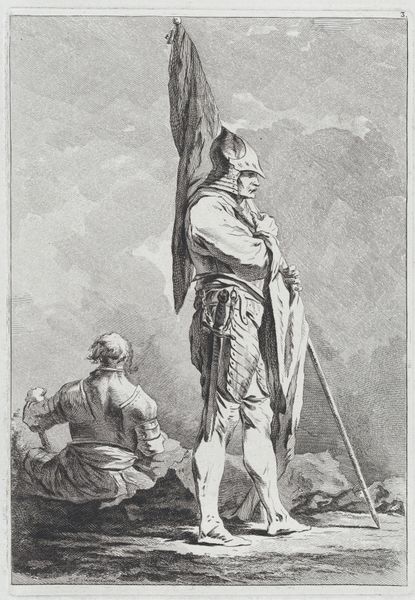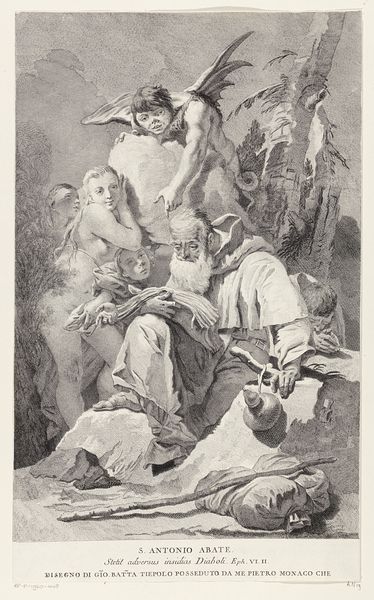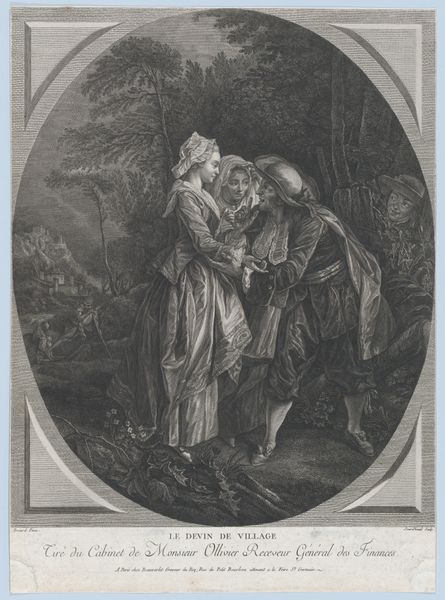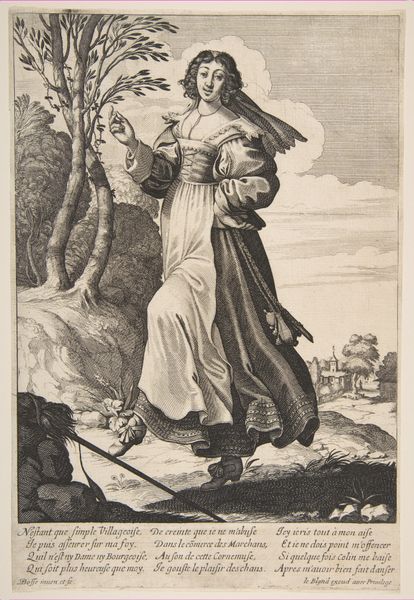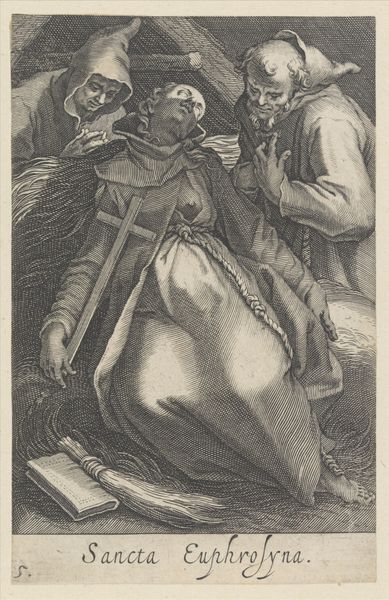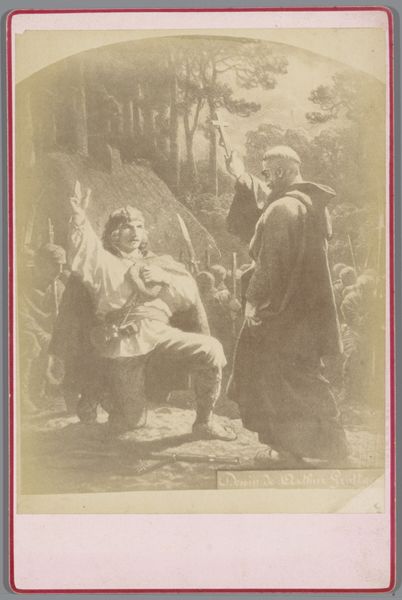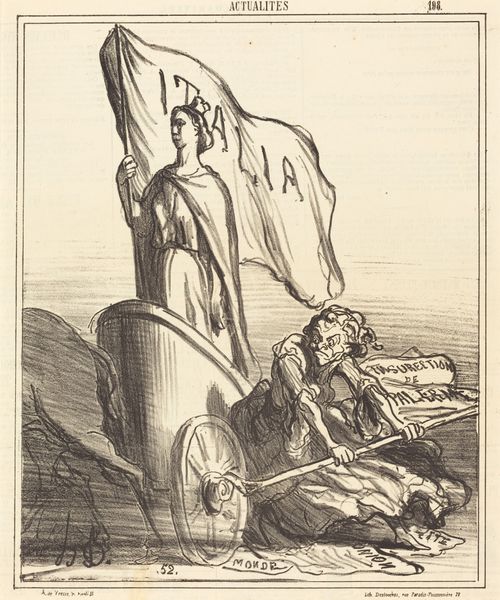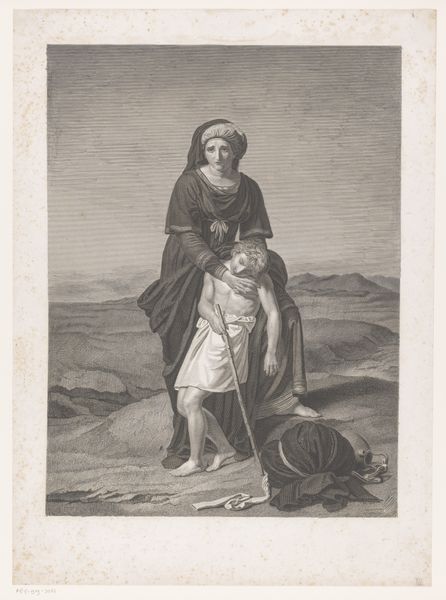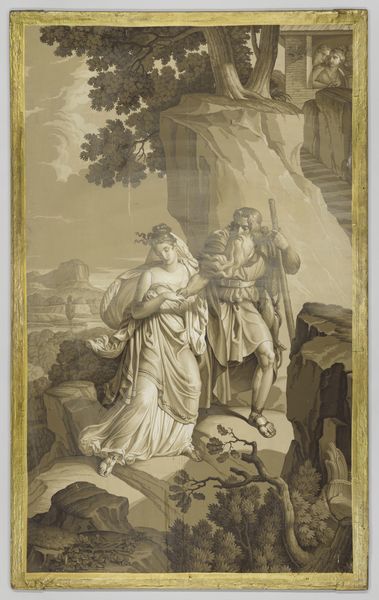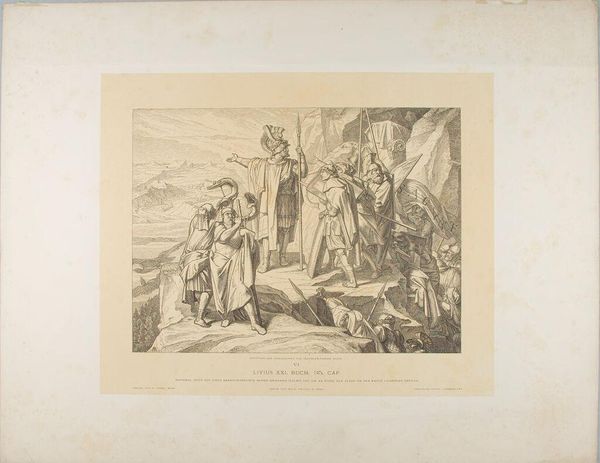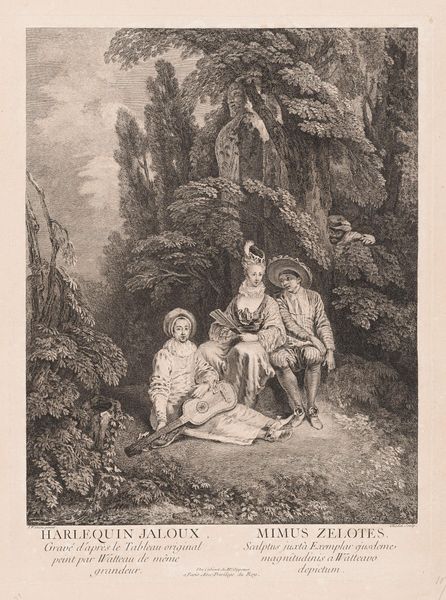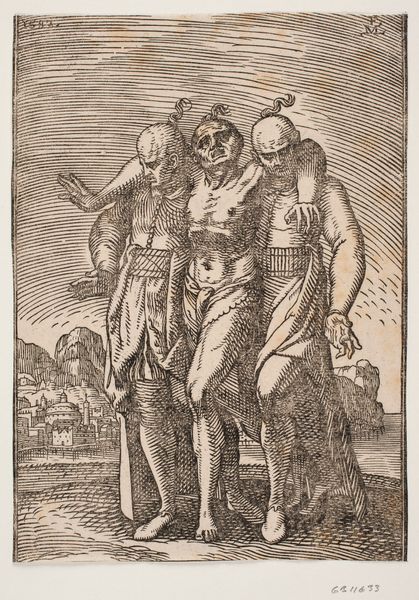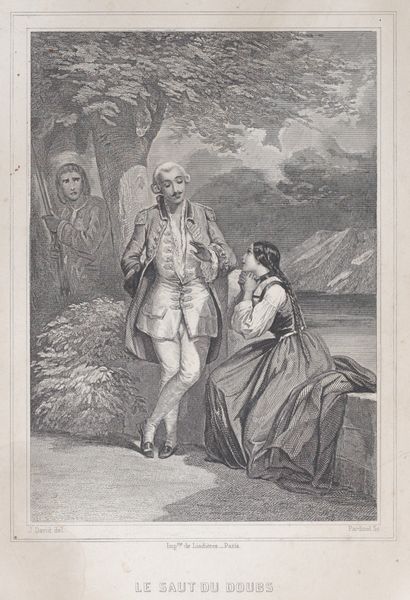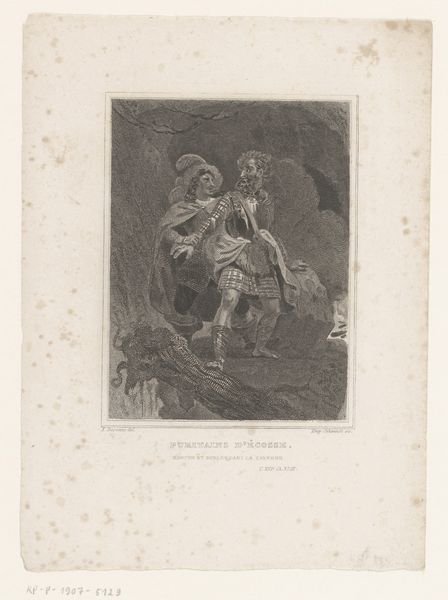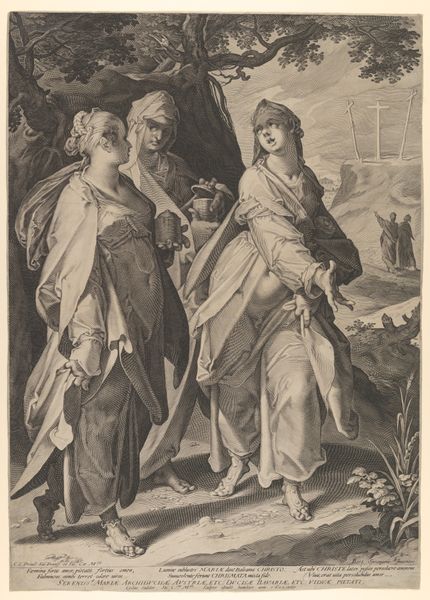
drawing, print, engraving
#
portrait
#
drawing
#
neoclacissism
#
toned paper
# print
#
charcoal art
#
romanticism
#
france
#
men
#
history-painting
#
engraving
Dimensions: Plate: 21 3/4 x 15 7/8 in. (55.2 x 40.4 cm) Sheet: 23 5/16 x 17 5/16 in. (59.2 x 43.9 cm)
Copyright: Public Domain
Auguste Gaspard Louis Boucher Desnoyers created this engraving called Belisarius during the Neoclassical period in France. It depicts a Roman general, blind and impoverished, being led by a young boy, reflecting themes of justice and the fall from grace. The image uses visual codes to convey meaning. Belisarius, once powerful, is now reduced to a beggar, his bare feet and simple garments contrasting with his former status. The cultural reference to Roman history invites reflection on leadership, corruption, and the fickle nature of fame. Made during a time of political upheaval, this image comments on contemporary French society, perhaps critiquing the abuse of power or commenting on the fall of empires. The engraving medium itself is significant, as prints were a popular way to disseminate ideas and moral lessons widely. Understanding this artwork fully requires looking at the social and institutional history of France at the time. Art historians use primary sources like political pamphlets, literature, and records from art academies to better understand its meanings. By studying these resources, we can better grasp the role of art in reflecting and shaping social values.
Comments
No comments
Be the first to comment and join the conversation on the ultimate creative platform.
